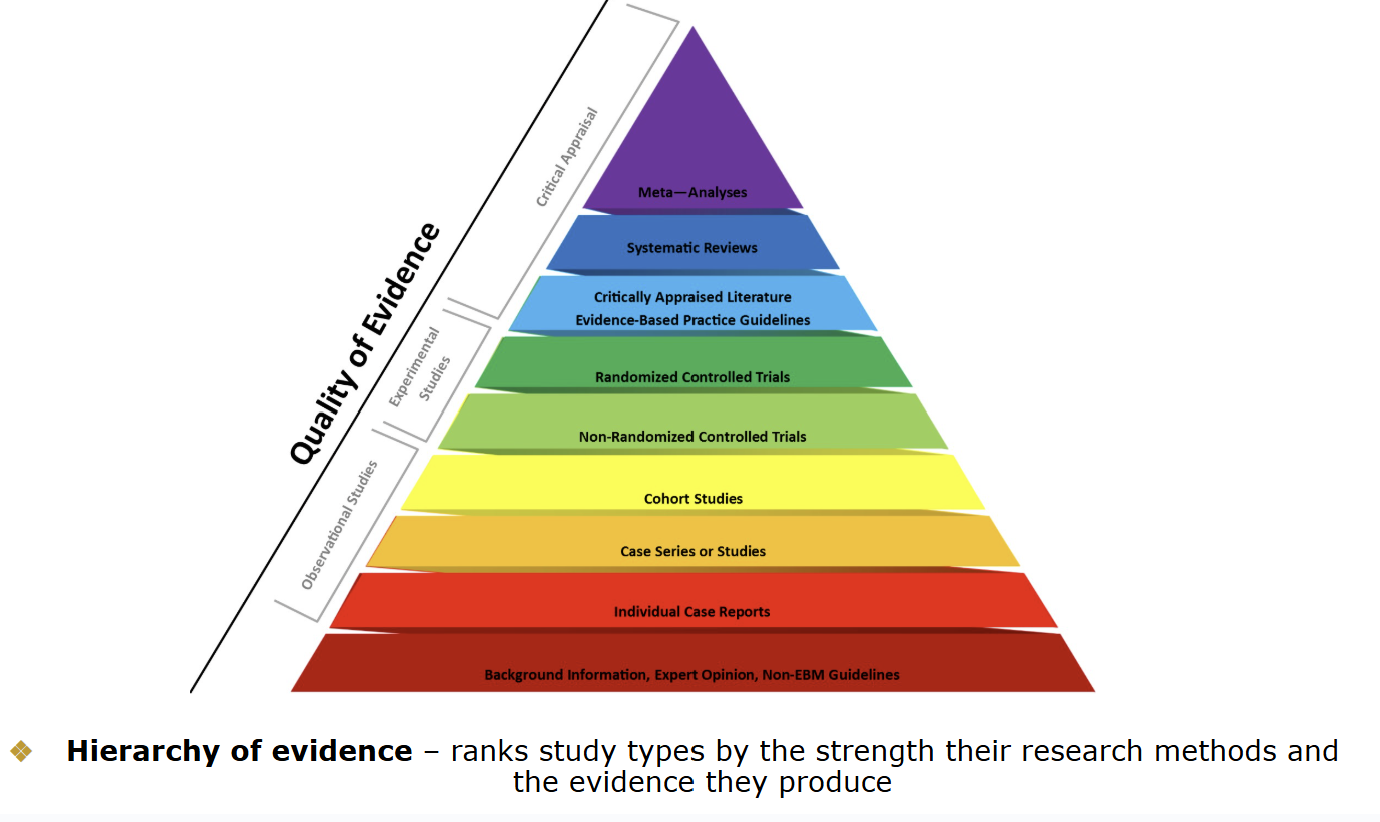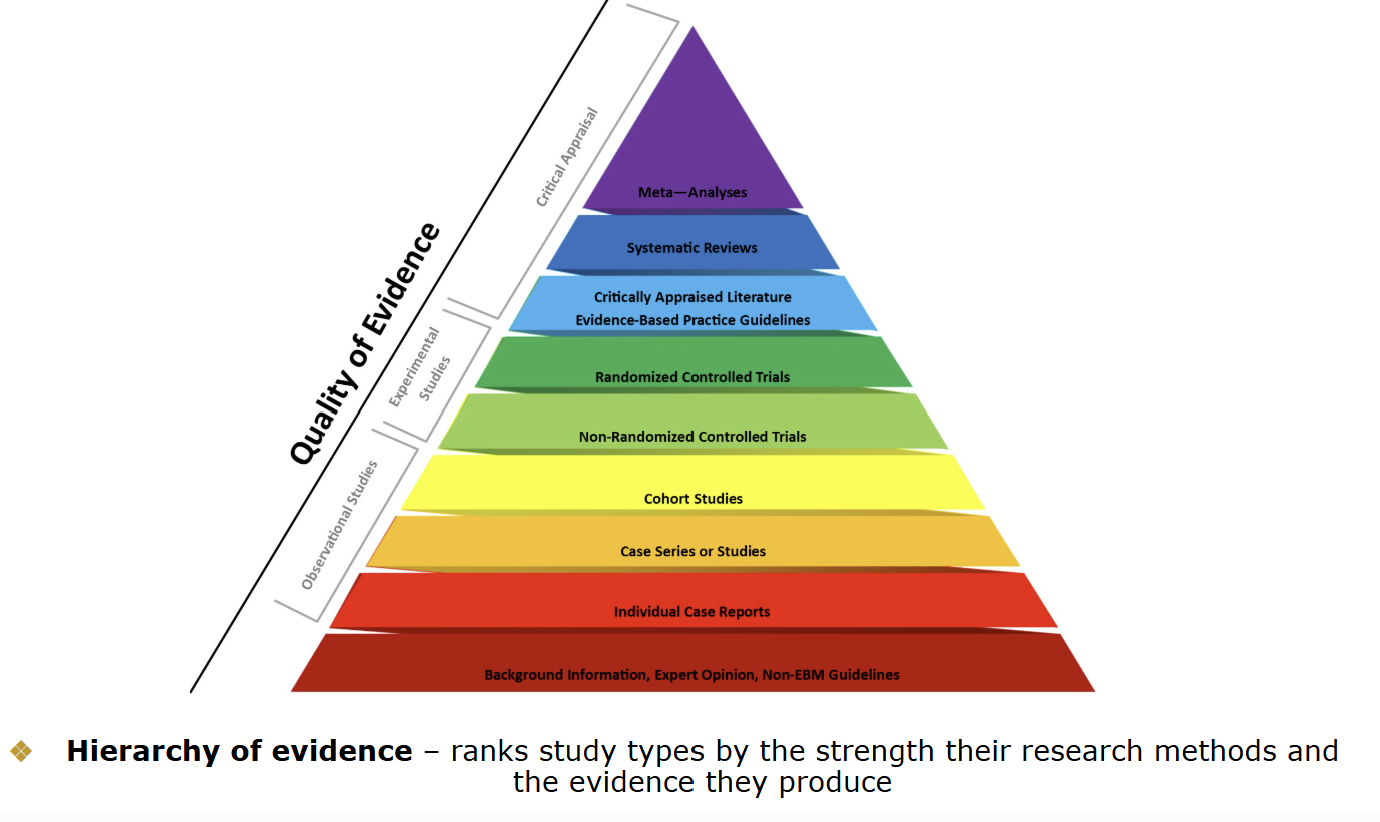Evidence Based Practice
1/9
There's no tags or description
Looks like no tags are added yet.
Name | Mastery | Learn | Test | Matching | Spaced |
|---|
No study sessions yet.
10 Terms

Observational studies (low quality)
1) Background information, expert opinion, non EBM guide (not considered a study)
2) Individual case reports
3) Case series or studies
4) Cohort studies

Experimental studies (medium quality)
1) Non-randomized controlled trials
2) Randomized controlled trials

Critical appraisal studies (highest quality)
1) Critically appraised literature; evidence-based practice guidelines
2) Systematic reviews
3) Meta-analyses
Involves concepts of basic and applied research
Data/results can be measured (by quantities/numbers)
Example: What is the mean blood pressure measurement after one week of therapy with drug X?
Quantitative Research
Conducted to gain insight by discovering meanings
Based on belief that reality is based on perceptions that differ for each person and change over time
Data/results are descriptive which can be observed but not measured
Qualitative Research
Example: What is the experience of single mothers with newly diagnosed breast cancer?
Qualitative research
Involves concepts of basic and applied research
Data/results can be measured (by quantities/numbers)
Quantitative research
Example: What is the mean blood pressure measurement after one week of therapy with drug X?
Qualitative research
Scenario: You are a staff nurse in a specialty long-term care facility for adult patients with spinal cord injuries. Patients admitted to your unit usually are young and have had injuries that resulted in quadriplegia. The patients are at risk for pressure injuries.
In a monthly staff meeting, you report that the incidence of pressure injuries on the unit in each of the most recent quarters was higher than it had been for any of the previous 12 quarters. The nurse manager notes that money has been allocated in the current budget for purchase of new equipment as needs are identified. The nurse manager gives the staff information on a new type of low air loss alternating pressure mattress that is reported to be “more effective in preventing pressure injuries than the alternating pressure mattress overlays now being used.” The nurse manager requests that the staff make a recommendation about purchase of the new pressure injury prevention mattress.
What is PICOT?
Problem: adults at risk for pressure injury
Intervention: Low air loss alternating pressure mattress
Comparison: Alternating pressure mattress overlays (initial)
Outcome: Incidence of pressure injuries
Time: During admission to a long-term care facility
PICOT Question: Is the use of a low air loss alternating pressure mattress more effective than an alternating pressure mattress overlay in preventing pressure injuries among a population of patients with quadriplegia during admission to a long-term care facility?
PICOT (for comparing/developing EBP)
P = patient, population, or problem of interest
I = intervention of interest
C = comparison of interest (compare intervention)
O = outcome of interest
T = time